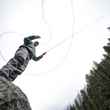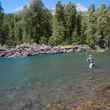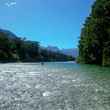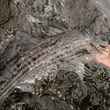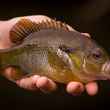Unless you're a much luckier angler than I am, your trips to the stream won't always be graced by plentiful hatches and rising trout which reveal themselves to you through their intermittent visits to the surface. Trout spend ninety percent of their time feeding below the surface where food sources are plentiful and feeding is less risky and energy consuming. This leaves the angler with one task of primary importance: finding fish. Sometimes, trout feeding below the surface can be spotted from above. But, even the keenest of eyes will fail to detect most trout feeding subsurface. After all, the stream and the trout conspire to keep your quarry hidden. Trout seek out the places that provide them with what they need while keeping them hidden from predators like otters, birds and fishermen.
Recently, I found myself on a tumbling mountain stream that I used to fish with regularity, but have not returned to in some time. Over the last few years, the northeast has been hit by a number of major storms. Streams and rivers have been repeatedly blown out by high water flows, stream beds scoured and scraped by storm surge, leaving many reshaped and reformed, sometimes bearing little resemblance to their former selves. Some pools looked virtually unchanged, save for minor changes like longer tailouts or slightly reformed shelves and drop-offs within the pools. But much of the stream was virtually unrecognizable, its new shape and form offering up not even the ability to reconstruct or imagine its creation by storm waters of the last few years.
The result was a stream that I couldn't approach in the way I had for years, hopping from pool to pool or run to run, unthinkingly plying the same spots I'd always plied -- knowing that fish almost certainly lie waiting beneath.



